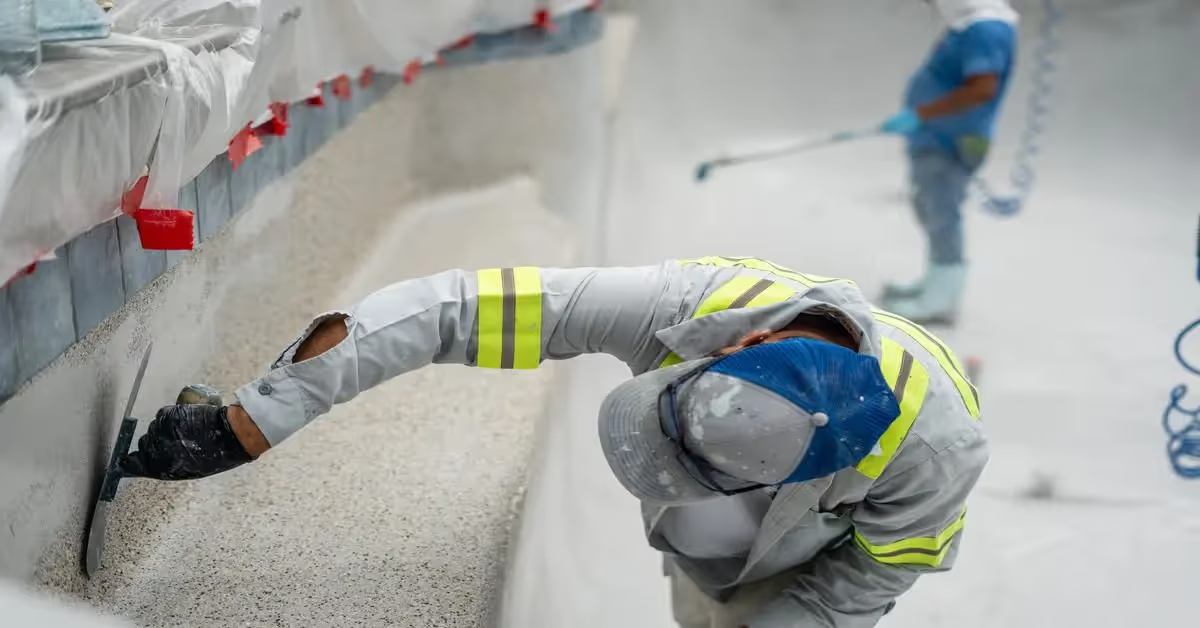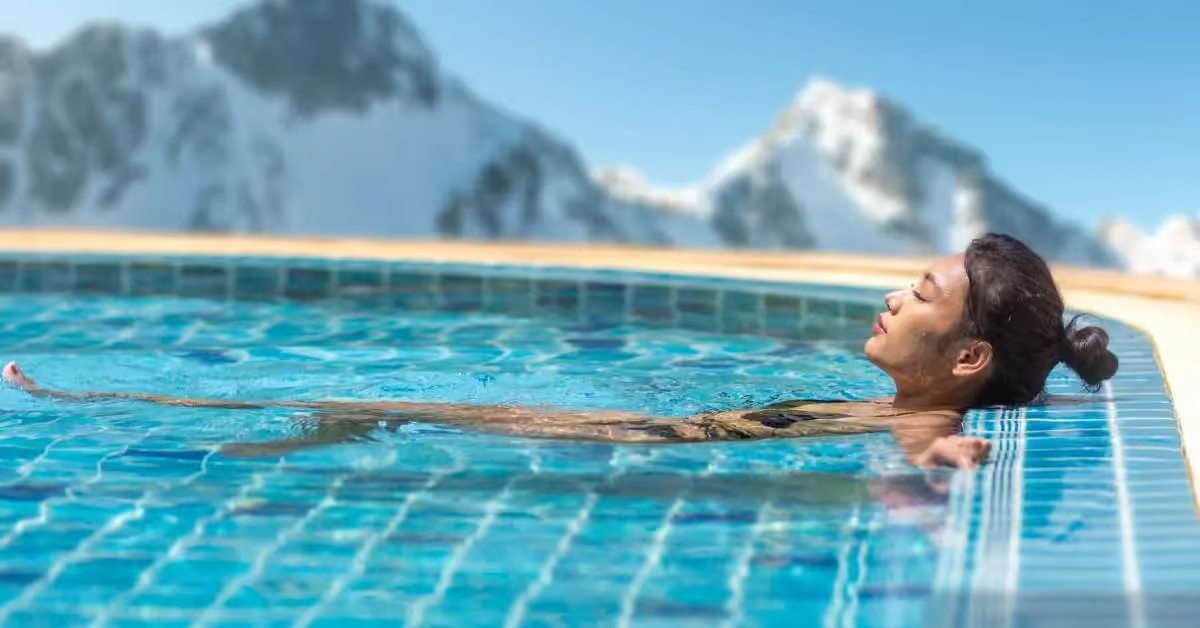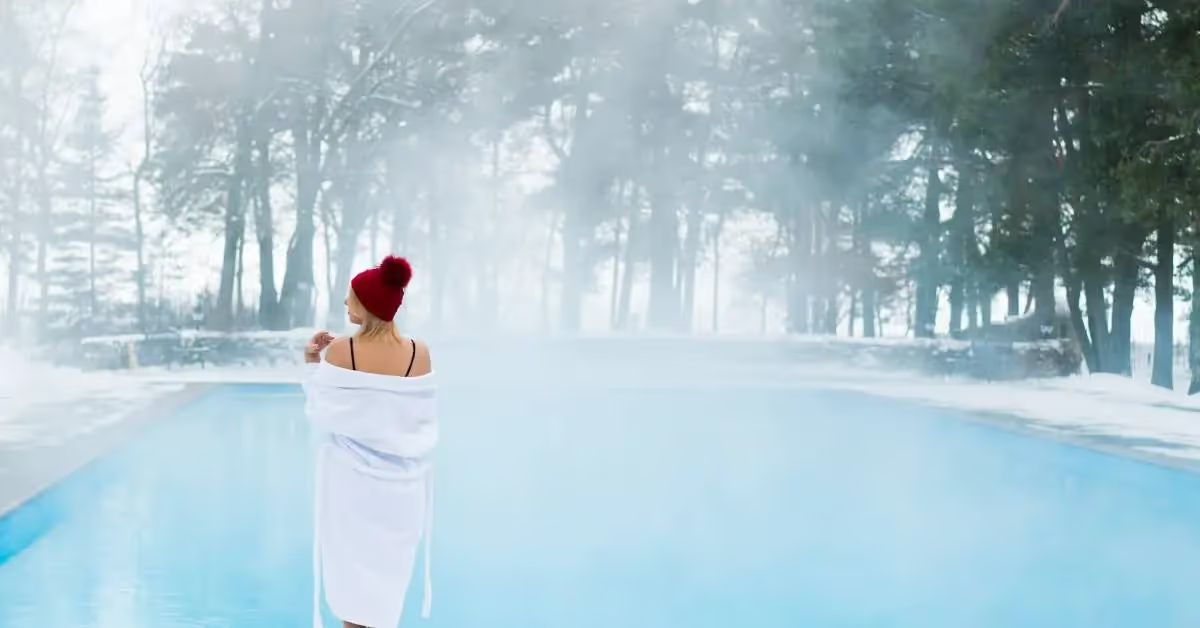Essential Steps To Prepare Your Pool for Winter
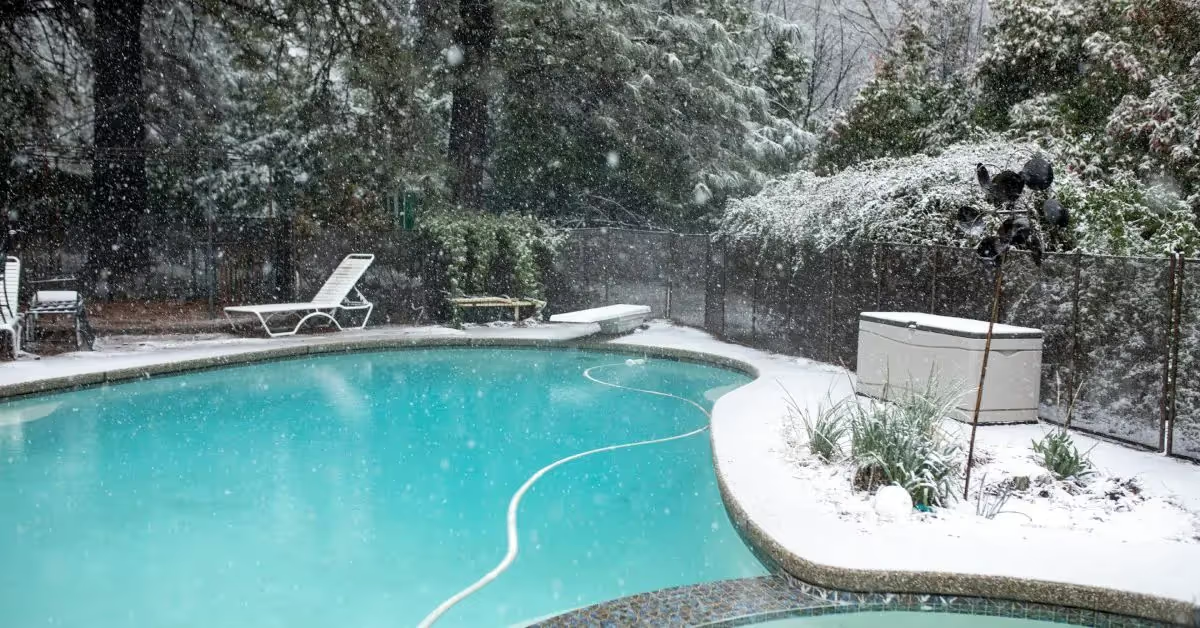
Winterizing your swimming pool promotes its longevity, preventing unexpected repairs from freezing temperatures that can wreak havoc on the pool’s structure and equipment. Let’s explore essential steps to prepare your pool for winter for a smooth opening when spring arrives.
Step 1: Prepare Your Pool Surroundings
Before addressing the pool itself, prepare the surrounding area for winter. Clean and dry all patio furniture before storing it indoors or covering it securely. This step protects the furniture from weather damage so it’s ready for next season.
Trim overhanging trees or shrubs around your pool area to reduce the risk of debris falling into the pool and onto the cover during winter storms. Pruning also prevents branches from breaking under snow’s heavy weight and potentially damaging your cover or equipment.
Step 2: Thoroughly Clean the Pool
Cleaning your pool prepares it for hibernation. Skim the surface to remove leaves and debris, so nothing decays over the winter. Use a pool vacuum to clean the bottom and eliminate dirt and sediment. Scrub the walls and floor to prevent algae growth, getting into every nook. Clean pool accessories like ladders and diving boards. Overall, a clean pool means fewer issues when you open it in the summer.
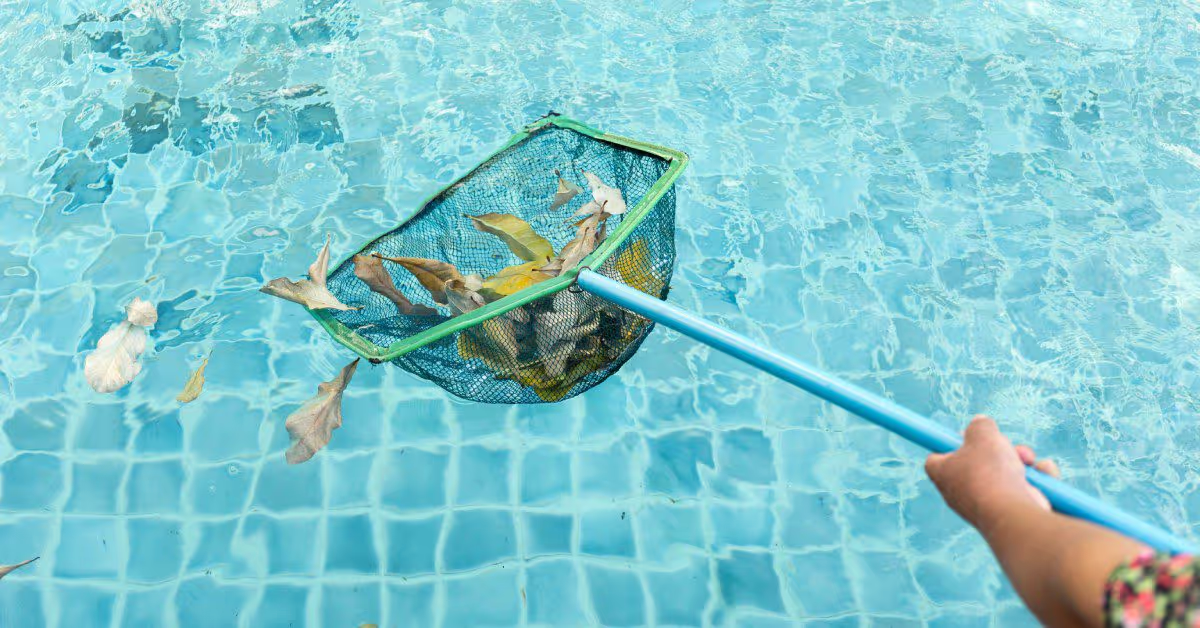
Step 3: Balance the Water Chemistry
Balance your pool’s chemistry by testing pH levels. Aim for a range of 7.2 to 7.6 to prevent corrosion and scaling. Use reliable products designed for pH adjustment in swimming pools to maintain stability throughout the winter.
Maintain Alkalinity and Calcium Hardness
While pH levels are crucial, alkalinity and calcium hardness are equally important. Keep alkalinity between 80 and 120 parts per million (ppm) to buffer pH fluctuations. This balance prevents etching and staining, safeguarding your pool’s structure. Calcium hardness should stay between 180 and 220 ppm. If levels fall outside this range, you risk scaling or corrosion.
Step 4: Shock the Pool
Shocking your pool means adding a large amount of chlorine to eliminate bacteria and contaminants. Choose a high-quality shock product and follow the manufacturer’s instructions for the best results. Timing matters, so shock your pool a day before closing it. A well-timed shock treatment will leave you with cleaner water when warm weather arrives.
Step 5: Lower the Water Level
Lowering the water level is an essential step to prepare your pool for winter, as it prevents damage from ice expansion. Drain your pool below the skimmer and tile line (generally six to 12 inches from the top). This adjustment accommodates rain and snowmelt, preventing overflow. Maintaining this level protects your pool’s tiles and structure from cracking due to ice pressure.
Safety precautions are important when lowering your pool’s water level. Use a submersible pump for controlled, efficient water drainage. Be cautious with vinyl liners, as improper handling can lead to tears or wrinkles.
Proper Disposal of Pool Water
Properly disposing of pool water protects the environment. The water contains chemicals that can harm local ecosystems if you improperly release it. Drain water into a sanitary sewer system or consult with local authorities for other disposal methods. Avoid draining pool water into storm drains or streams. Responsible disposal complies with environmental regulations and safeguards your community’s natural resources.
Step 6: Protect Pool Equipment
As you prepare your pool for winter, disconnect the pump and remove the remaining water to avoid internal freezing that could crack parts. Next, drain all the water from the heater to protect the heat exchanger and other components. Filters, especially sand or cartridge types, require thorough draining and cleaning. Confirm that the filters are free from moisture to prevent rust and inefficiency.
Store your pool equipment in a dry, sheltered location like a garage or shed to keep items free from moisture and harsh weather exposure. Cover smaller components, such as plugs and valves, in protective bags or boxes to prevent misplacement. Elevate equipment off the ground to enhance airflow and minimize the risk of rust.
Using Antifreeze for Protection
Antifreeze provides an additional defense against freezing in your pool system. Focus on areas prone to freezing, such as pipes, skimmers, and return lines. Use nontoxic antifreeze specifically for swimming pool systems. Pour antifreeze into each line after draining the water, following the manufacturer’s instructions. This process prevents water trapped in the system from expanding and causing cracks.
Step 7: Cover the Pool
Selecting the appropriate pool cover shields your pool from debris and weather damage. Mesh covers allow water to drain while keeping out leaves and debris, making them suitable for areas with heavy rainfall. Solid covers, on the other hand, block sunlight and prevent evaporation, ideal for regions with significant snowfall.
Once you select a cover, use sturdy anchors and straps to hold the cover in place. The cover should be taut to offer the greatest wind resistance. Pay attention to edges where wind can lift the cover, and use water tubes or weights if necessary. This secure setup makes summer maintenance more manageable.
Perform regular pool cover checks throughout the winter to maintain effectiveness. Inspect the cover for wear and tear, especially after storms or heavy snowfall. Repair damage immediately to prevent further issues. Keep water from pooling on the surface, which weakens the cover and causes sagging. Maintain the tension of your pool cover by adjusting anchors.

Winter Safety Measures for Your Pool
Before winter descends, use these helpful tips as a swimming pool maintenance checklist:
- Install pool alarms: These systems alert you if an object or person enters the pool, providing peace of mind, especially if you have children or pets.
- Create a barrier: Place a temporary barrier around your pool to prevent accidental access. Use sturdy fencing that can withstand winter weather or a pool safety net.
- Keep emergency equipment handy: Keep emergency equipment, such as life rings and reaching poles, in good condition. Store these tools in a nearby location where they’re safeguarded from cold weather yet accessible.
- Check lighting around the pool: Provide adequate lighting around your pool area to enhance visibility. Install weather-resistant fixtures that can withstand harsh conditions.
From balancing water chemistry and protecting equipment to securing the pool area, each winterization step contributes to a hassle-free reopening next summer. To make this process easier and more efficient, consider enlisting the expertise of swimming pool contractors in Utah.
At Odyssey Pools, our knowledgeable team offers tailored solutions to meet your specific needs, ensuring your pool can handle harsh winters. Trust in us to provide the professional care and attention your pool deserves, so you can enjoy a ready-to-use pool when the temperatures rise again.
Transform Your Backyard Today
Contact Odyssey Pools now to create the luxurious pool of your dreams. Let's get started!


